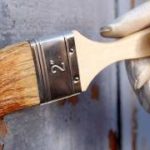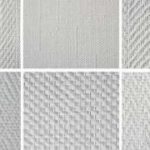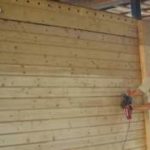Preparing concrete surfaces (walls, floors) for stain is an important step-by-step process during the construction work – and here are some important tips for work.
For preparing concrete for stain you will need to perform a number of very important technical operations. Execution of various jobs usually depends on the state of the concrete surface (walls or floor). First of all, you will need to learn the technique of stain. The technology contains quite a few points, and none of them can be treated with negligence. After reading this article, we hope, you will learn not only how to stain concrete, but also many what-and-why facts that will be very useful for you in future.
The very beginning
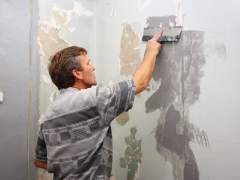 Let’s start with the first rule which is the part of the painting technique of concrete walls: you can’t stain concrete, if its production was performed less than 30 days ago!
Let’s start with the first rule which is the part of the painting technique of concrete walls: you can’t stain concrete, if its production was performed less than 30 days ago!
For working with exposed concrete you will need:
- plaster
- an electric drill with a special nozzle
- primer
- paint
- masking tape
- a narrow putty knife (50-120 mm)
- a roller
- brushes of different sizes
- net capacity (to dilute the solution)
- paint tray or mesh
- protective glasses
- a ladder
- tatters
- a wide spatula (500 mm)
- a set of sandpapers with different grain layers
Preparation of concrete walls or floors for stain
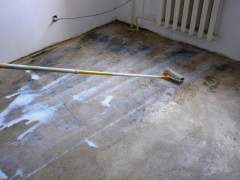 Preparation of concrete surfaces begins with the determination of moisture content of the coating. If you find this thing new for you, do not be alarmed. Its humidity is usually checked in a fairly simple way. Take the plastic film and glu it with tape on the concrete surface. The result will be seen exactly in one day. If condensation forms on the film or you see sealed section – this means that the humidity is too high. You better wait one more month until the concrete wall reaches the allowable humidity.
Preparation of concrete surfaces begins with the determination of moisture content of the coating. If you find this thing new for you, do not be alarmed. Its humidity is usually checked in a fairly simple way. Take the plastic film and glu it with tape on the concrete surface. The result will be seen exactly in one day. If condensation forms on the film or you see sealed section – this means that the humidity is too high. You better wait one more month until the concrete wall reaches the allowable humidity.- If the concrete has the old coat of paint, you need to remove it. Tools for this job is rather common.
- Dirt and dust should not be present on a concrete wall. Soda ash solution may help you with this work in quite a brilliant way. The ratio is about 1,1 lb of soda for a bucket of water. Eliminated rust can be a 15% solution of copper sulfate, but first, these areas must be treated with water. Large spots are usually covered with rosin varnish.
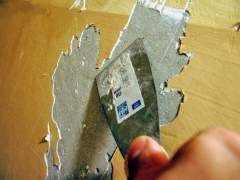 Concrete walls should not have roughness. Conventional sandpaper will help you to achieve the desired quality of concrete pavement.
Concrete walls should not have roughness. Conventional sandpaper will help you to achieve the desired quality of concrete pavement.- Give the strength of the surface layer of concrete using the mix of salts and acids that you prefer.
Plastering concrete must be performed in two layers. The role of the first layer is to eliminate the irregularities. The second layer will give a smoother surface. After completing plastering you can relax for a while. This is the penultimate step before stain.
What is the best filler for concrete walls?
To choose a filler, it is necessary to determine how dry or wet the air in your apartment/house usually is. For dry areas it is desirable to use dry mixes based on gypsum. In humid areas you should better use dry mixes based on cement.
How to prepare plaster
- To prepare the plaster you will need to pourit into a clean water container
- Check out the instructions on the package and pour it in the correct proportions into the mixture of water
- Drills should stir the resulting texture
It’s important to know: Do not change the procedure for preparation of the solution. First, a container is filled with water, and only then with poured powder. Otherwise, it will be more sediment on the bottom of the solution container.
Plastering concrete
Plastering begins with priming the surface. After the application of the starting layer of putty you will need to wait for it to dry completely. The waiting time can be found on the packaging with the material. The surface of the putty layer should be sanded with sandpaper. Then apply a final coat of putty. When it’s dry, topcoat filler surface is polished with sandpaper with large grade. Now the surface may be primed.
Priming concrete
Concrete walls need a primer of deep penetration – two or, preferably, three layers. To apply primer use a roller or a brush. When the preparation of concrete walls is finished, you only need to choose stain.
Stain types
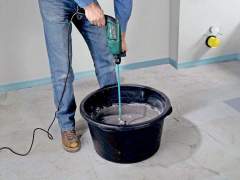 The most common types of stain suitable for concrete surfaces are:
The most common types of stain suitable for concrete surfaces are:
- Epoxy coatings
They usually protect the surface from moisture and have increased durability. But the operations with this type of stain are permitted in ventilated areas only
- Acrylic or latex-based stain
They have very low toxicity allowing you to use them in confined spaces too. They withstand strong temperature fluctuations
- Glossy stain
It should be notices that this type of stain is highly susceptible to technical damage. In USA manufacturers produce stain with the most stringent standards in terms of environmental friendliness
This type of stain is new and fashionable
We hope this article helped you to get the necessary information on how to prepare concrete for stain in a proper way.
